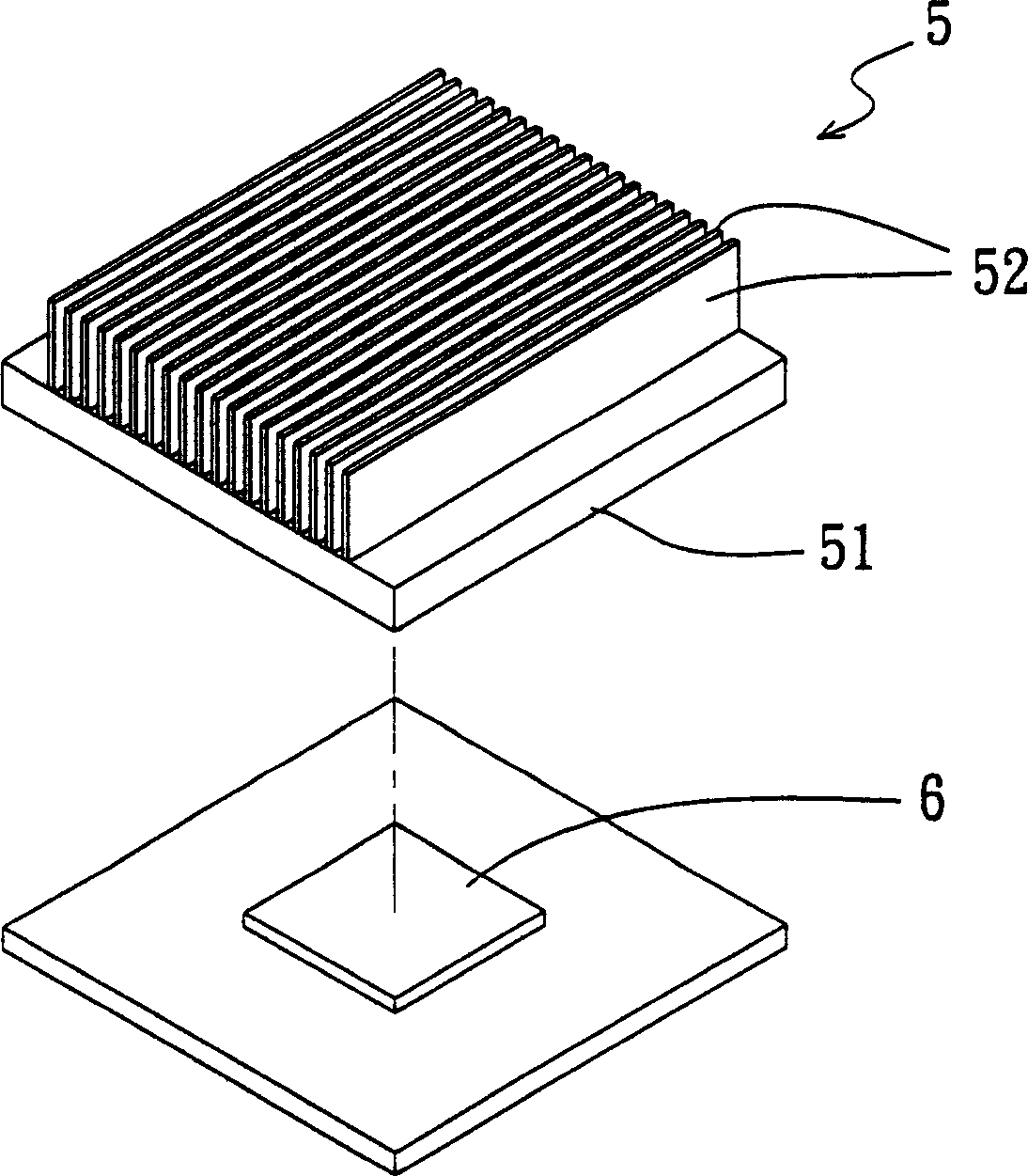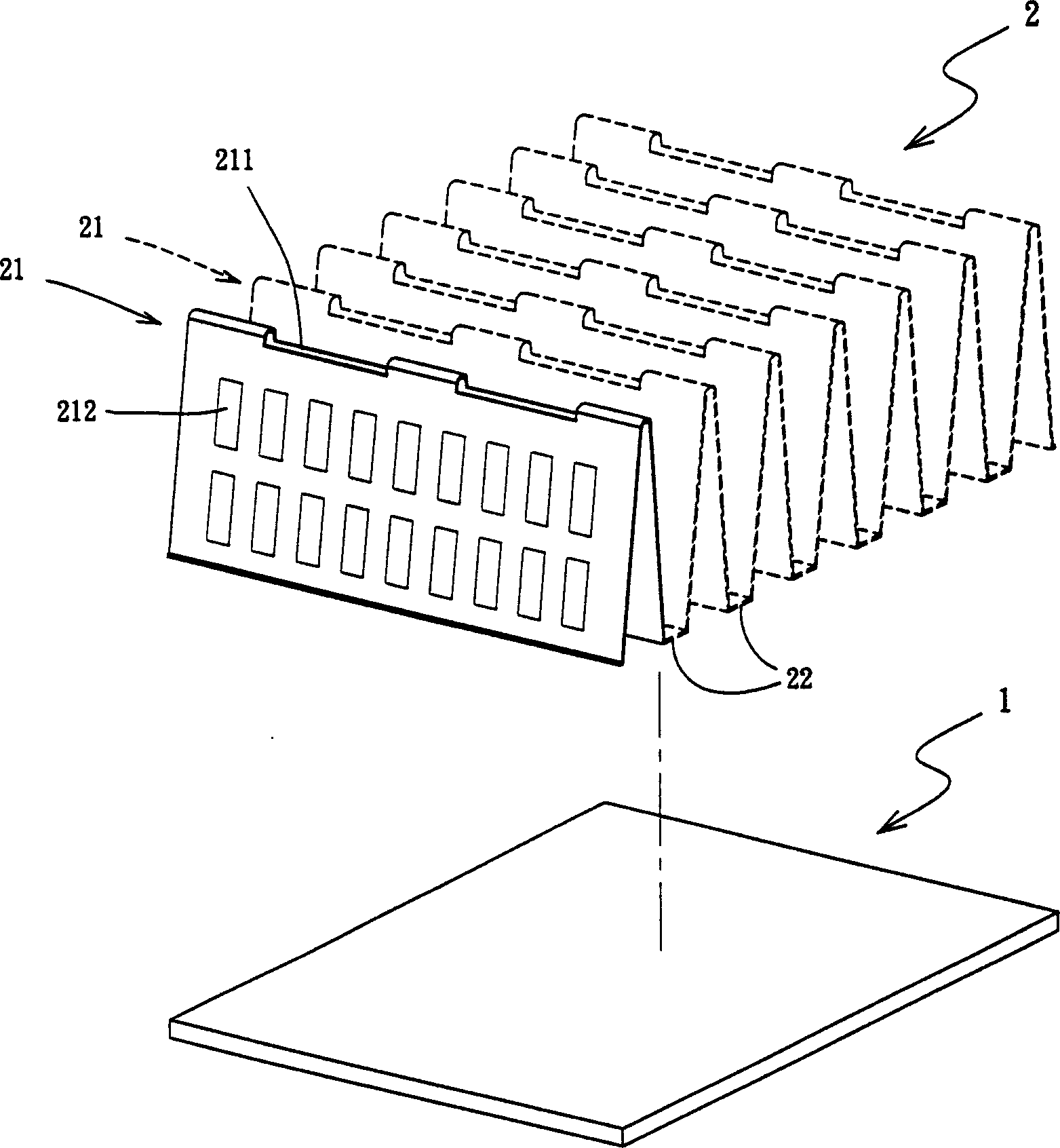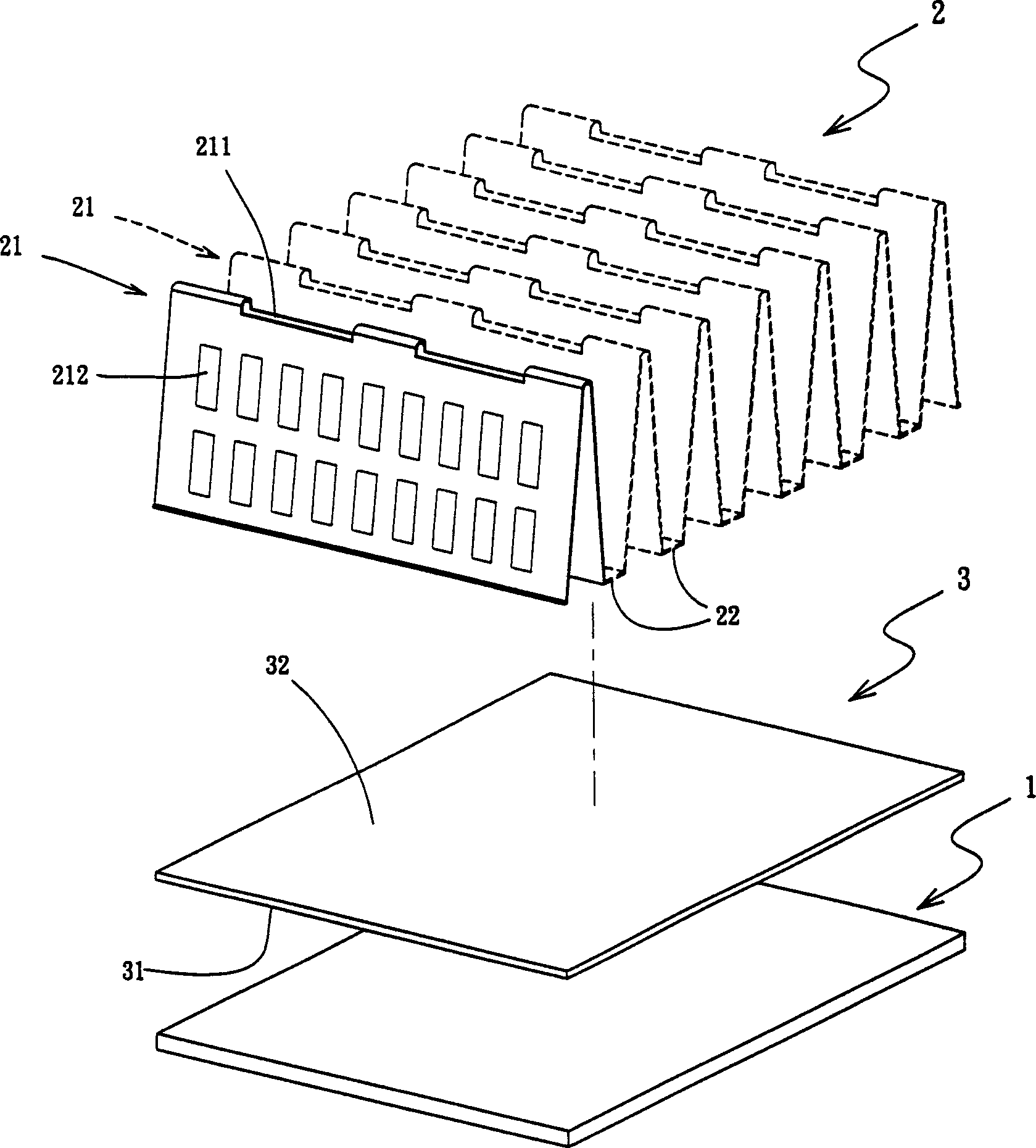Heat conductor and its complex machining process
A composite processing and bonding surface technology, which is applied in semiconductor devices, semiconductor/solid-state device parts, instruments, etc., can solve problems such as heat dissipation efficiency bottlenecks, heat transfer obstacles, and inability to improve
- Summary
- Abstract
- Description
- Claims
- Application Information
AI Technical Summary
Problems solved by technology
Method used
Image
Examples
Embodiment Construction
[0047] refer to figure 2The heat conduction device of the present invention comprises a first heat conduction element 1 and a second heat conduction element 2 structurally, the first heat conduction element 1 can be a flat plate with a certain thickness, and its function is similar to the base part of a traditional radiator. It is used to directly or indirectly contact a heat source body, and metal materials with high thermal conductivity such as copper or aluminum can be used in the selection of materials. The second heat conduction element 2 can use the same material or a different material from the first heat conduction element 1, and its shape can be planned according to the internal space of the product actually used, and can be a flat plate (such as a heat spreader or a heat conduction plate simply used to conduct heat) Sheets and other applications), can also be other different shapes, and in this example, the second heat conduction element 2 is repeatedly bent in adva...
PUM
 Login to View More
Login to View More Abstract
Description
Claims
Application Information
 Login to View More
Login to View More - Generate Ideas
- Intellectual Property
- Life Sciences
- Materials
- Tech Scout
- Unparalleled Data Quality
- Higher Quality Content
- 60% Fewer Hallucinations
Browse by: Latest US Patents, China's latest patents, Technical Efficacy Thesaurus, Application Domain, Technology Topic, Popular Technical Reports.
© 2025 PatSnap. All rights reserved.Legal|Privacy policy|Modern Slavery Act Transparency Statement|Sitemap|About US| Contact US: help@patsnap.com



